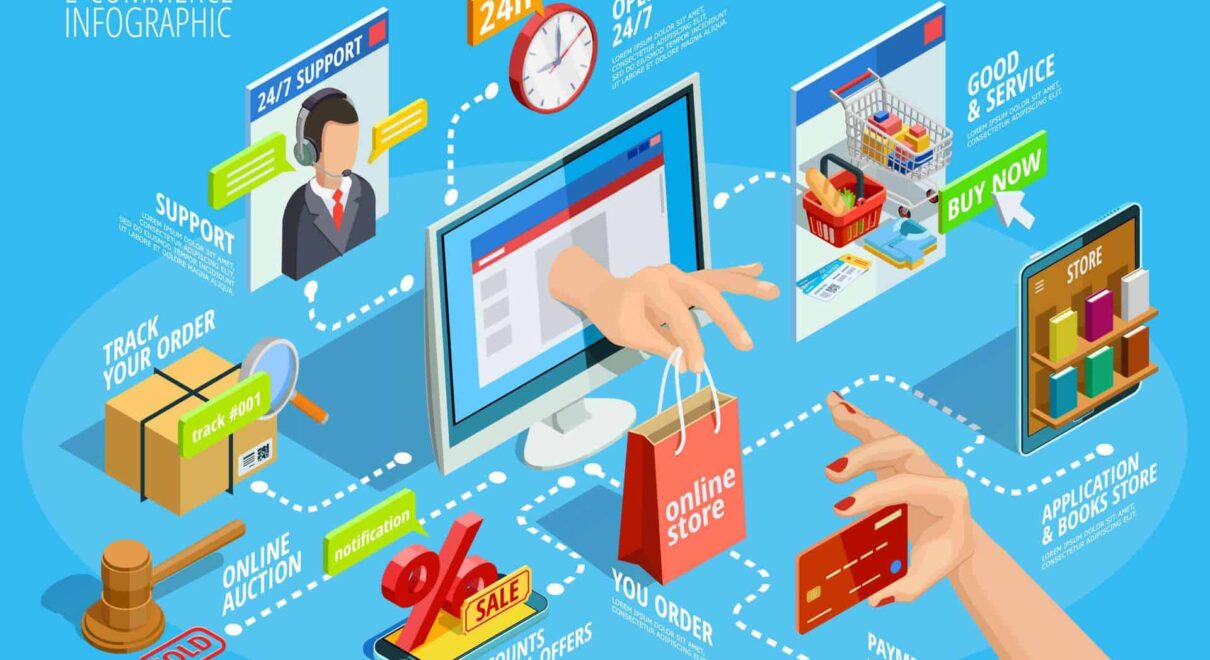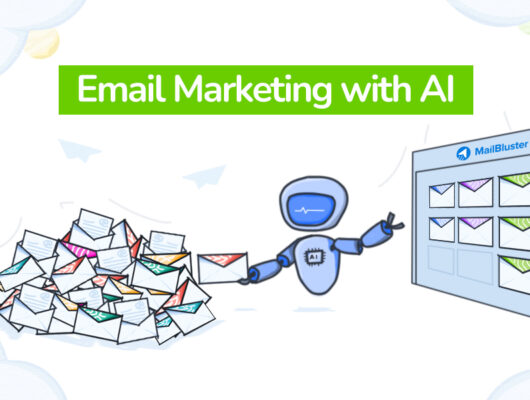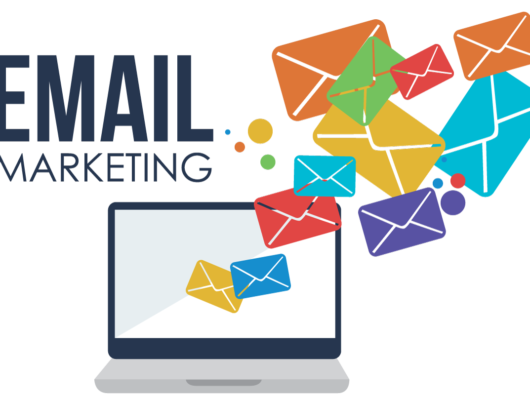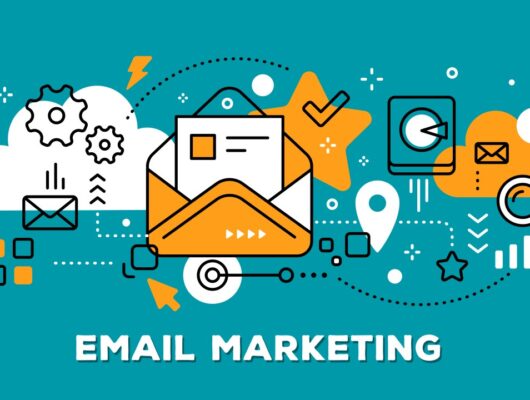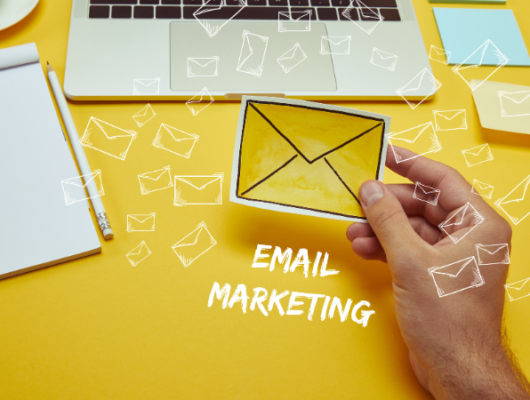Running a successful e-commerce business goes beyond having a well-designed website or high-quality products. To stand out in a competitive digital marketplace, you need a comprehensive marketing strategy that attracts visitors, nurtures relationships, and converts leads into loyal customers.
In this article, we’ll explore effective e-commerce marketing strategies that can help you drive more traffic to your store, enhance customer engagement, and increase sales.
1. Search Engine Optimization (SEO): Optimize for Visibility
Search engine optimization (SEO) is the foundation of any successful e-commerce marketing strategy. By improving your website’s search engine ranking, you can attract more organic traffic and make it easier for potential customers to find your products.
- Keyword Research: Start by conducting keyword research to understand what your target audience is searching for. Use tools like Google Keyword Planner or SEMrush to identify high-traffic keywords related to your products. Incorporate these keywords into your product descriptions, blog posts, and category pages to improve your chances of ranking higher on search engines.
- On-Page Optimization: Ensure each product page is optimized for search engines by including relevant keywords in titles, meta descriptions, and image alt text. High-quality content that answers customer queries can help your site rank higher and drive traffic.
- Technical SEO: Improve your site’s performance by focusing on technical aspects such as page load speed, mobile optimization, and secure (HTTPS) connections. A faster, mobile-friendly site enhances user experience and boosts SEO rankings.
- Content Marketing: Develop a content marketing plan that includes blog posts, how-to guides, and video tutorials. These content pieces should align with your target audience’s interests and provide value, helping to improve your SEO and drive organic traffic.
2. Paid Advertising (PPC): Reach Your Audience Instantly
Paid advertising is an effective way to drive immediate traffic to your online store and increase brand visibility. With platforms like Google Ads and social media ads, you can target specific demographics and generate leads quickly.
- Google Ads: Use Google Ads to bid on high-traffic keywords related to your products. With Google Shopping Ads, you can showcase your products directly on search results pages, making it easier for customers to click and shop.
- Social Media Ads: Platforms like Facebook, Instagram, and Pinterest allow for advanced targeting based on demographics, interests, behaviors, and even purchase history. Run paid ad campaigns to reach your target audience and drive traffic to your e-commerce store.
- Retargeting Campaigns: Retargeting ads help re-engage visitors who have previously interacted with your store but didn’t make a purchase. By showing personalized ads that feature products they viewed or added to their cart, you can encourage them to return and complete their purchase.
- A/B Testing: Continuously test and optimize your ads to maximize performance. Experiment with different ad copy, images, and targeting options to see which combinations produce the best results.
3. Social Media Marketing: Connect and Engage with Your Audience
Social media marketing is a powerful tool for building brand awareness, engaging with your audience, and driving traffic to your online store. By creating consistent and engaging content, you can build a community around your brand and establish trust with potential customers.
- Create Engaging Content: Share a variety of content, including product features, customer stories, behind-the-scenes glimpses, and educational content. Use images, videos, and interactive posts like polls and quizzes to engage your audience.
- Influencer Marketing: Partner with influencers in your niche to promote your products to their followers. Influencers can drive traffic to your store and create social proof, which can help build credibility and trust with potential customers.
- Social Media Ads: Run paid ads on platforms like Instagram and Facebook to reach your target audience based on specific criteria. Social media ads allow for detailed targeting, so you can hone in on the demographics most likely to be interested in your products.
- Hashtags and User-Generated Content (UGC): Use relevant hashtags to increase the discoverability of your posts. Encourage your customers to share photos of their purchases and tag your brand, then repost their content to your feed as UGC. This not only provides social proof but also builds community around your brand.
4. Email Marketing: Build Relationships and Drive Conversions
Email marketing remains one of the most cost-effective ways to stay connected with your customers, promote new products, and increase sales. By segmenting your audience and sending personalized emails, you can nurture leads and drive repeat business.
- Build an Email List: Offer incentives such as discounts, free shipping, or exclusive access to new products in exchange for email sign-ups. Use pop-ups or landing pages to encourage visitors to subscribe to your list.
- Personalized Emails: Send personalized product recommendations based on customer behavior, such as browsing history or past purchases. Use dynamic content to tailor emails to individual preferences and increase relevance.
- Abandoned Cart Emails: Set up automated emails to remind customers of items they left in their cart. Include a clear call-to-action (CTA) and a discount or incentive to encourage them to complete their purchase.
- Loyalty Programs and Exclusive Offers: Send emails promoting loyalty programs, rewards, and exclusive offers to encourage repeat purchases and retain customers. Use segmentation to send targeted offers to loyal customers, first-time buyers, or high-value customers.
5. Content Marketing: Educate and Inspire Your Audience
Content marketing is an excellent way to build relationships with your audience and establish your brand as an authority in your industry. By providing valuable and relevant content, you can increase trust and drive long-term sales.
- Blogging: Create blog posts that provide useful information related to your products or industry. For example, write how-to guides, product reviews, case studies, or customer success stories. Well-crafted content can attract organic traffic, improve SEO, and help convert visitors into customers.
- Video Marketing: Video is a highly engaging medium that can showcase your products, explain their benefits, and provide tutorials. Use platforms like YouTube, Instagram, and TikTok to share videos that resonate with your audience.
- Infographics and Guides: Create infographics or downloadable guides to help educate your audience about your products or industry. These types of content can be easily shared and used as lead magnets to grow your email list.
- Customer Stories and Testimonials: Share real customer stories and testimonials to build social proof. Positive reviews and success stories can increase trust and encourage potential customers to take action.
6. Referral and Affiliate Marketing: Harness the Power of Word-of-Mouth
Referral and affiliate marketing programs can help you tap into the power of word-of-mouth advertising, driving new traffic to your store and increasing sales through trusted recommendations.
- Referral Programs: Create a referral program that rewards customers for referring friends and family to your store. Offer incentives like discounts, free products, or store credits to motivate customers to share your brand with their network.
- Affiliate Marketing: Set up an affiliate program where bloggers, influencers, or other online entrepreneurs can earn a commission for driving traffic and sales to your store. This allows you to tap into a wider audience and pay affiliates based on performance.
7. Customer Reviews and Testimonials: Build Trust and Credibility
Customer reviews and testimonials play a critical role in the buying decision process. Positive reviews provide social proof and help establish trust with potential customers.
- Request Reviews: After a purchase, send an email asking customers to leave a review on your website or third-party review sites. Make the process simple by providing links and clear instructions.
- Display Reviews Prominently: Showcase customer reviews on your product pages, homepage, and social media to increase trust. Positive reviews help validate the quality of your products and improve conversion rates.
- Respond to Reviews: Engage with customers who leave feedback, whether positive or negative. Responding to reviews shows that you care about customer satisfaction and helps build a positive brand image.
8. Influencer and Affiliate Marketing: Leverage Trust and Authority
Influencers and affiliates can help extend your reach and generate sales by promoting your products to their audience. Choosing the right influencers and affiliates who align with your brand can yield great results.
- Find the Right Influencers: Look for influencers whose followers match your target audience. Micro-influencers (those with smaller but highly engaged followings) often have better conversion rates than large celebrities or influencers with millions of followers.
- Set Clear Expectations: Establish a clear agreement with influencers or affiliates, outlining expectations for content, performance, and compensation. Track the effectiveness of each partnership to determine ROI.
- Leverage Social Proof: Influencers and affiliates can help provide social proof that drives new customers to your site. Their recommendations can serve as a powerful endorsement for your products.
9. Retargeting Campaigns: Re-Engage Abandoned Visitors
Not every visitor who lands on your website will make a purchase right away. Retargeting ads are an excellent way to remind visitors of your products and bring them back to your site to complete their purchase.
- Ad Retargeting: Use retargeting ads on platforms like Google, Facebook, and Instagram to show ads to users who visited your website but didn’t convert. Display ads featuring products they viewed or added to their cart to encourage them to return.
- Email Retargeting: Send personalized emails to customers who abandoned their carts, reminding them of the items they left behind. Include a discount or free shipping offer to entice them to complete their purchase.
10. Offer Discounts and Promotions: Drive Urgency and Increase Conversions
Discounts and limited-time promotions are a great way to create urgency and encourage customers to make a purchase.
- Flash Sales: Run limited-time flash sales to offer deep discounts on popular products. Flash sales create excitement and urgency, which can encourage quick purchases.
- Seasonal Promotions: Tie your promotions to holidays, special events, or seasonal trends. Offering discounts during peak shopping times, like Black Friday or Cyber Monday, can help boost sales.
- Loyalty Programs: Reward your loyal customers with discounts, exclusive offers, or points for future purchases. This helps retain customers and encourages repeat business.
Conclusion
To thrive in the e-commerce space, you need to implement a well-rounded marketing strategy that targets various stages of the customer journey.
From SEO and paid advertising to content creation and influencer partnerships, each marketing tactic plays a key role in attracting traffic, engaging customers, and driving conversions.
By combining these strategies and continuously optimizing your efforts, you can create a sustainable marketing plan that helps grow your online store and increase sales.


